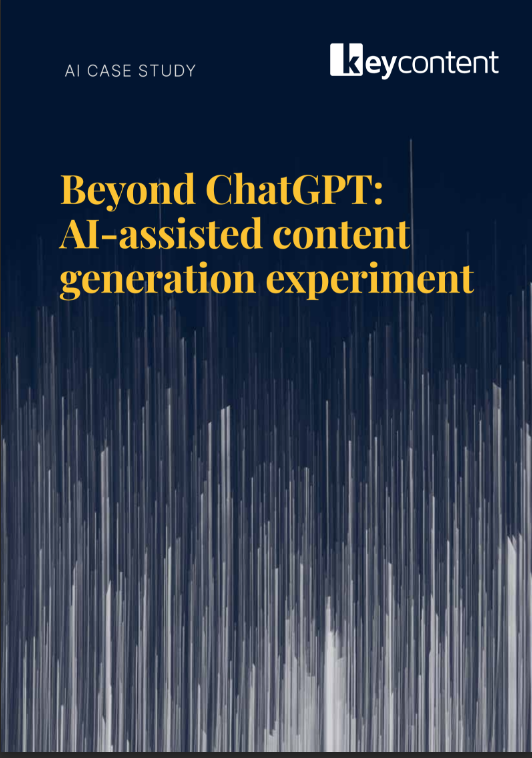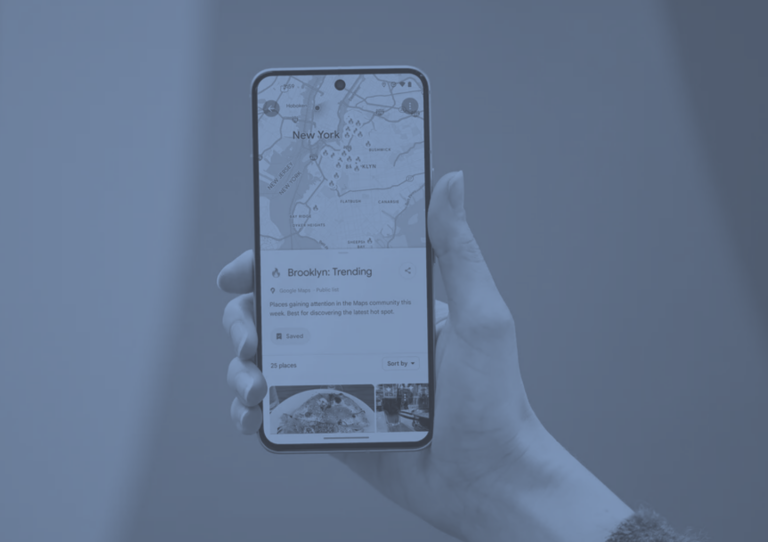In today’s digital landscape, the demand for high-quality content is ever-growing. Marketers are constantly seeking efficient ways to produce engaging content that resonates with their target audience. This is where AI content generation workflows come into play. With the help of artificial intelligence, marketers can streamline their content creation process and cater to various content types. Whether it’s blog articles, newsletters, or even full-fledged marketing campaigns, AI-powered workflows offer a systematic approach to content creation. In this blog post, we will explore the benefits of AI content generation workflows and provide insights on how to build an effective content workflow template. Let’s dive in and discover how AI can revolutionise your content creation process.
Understanding AI Content Generation Workflows
AI Content Generation refers to the use of artificial intelligence technology to automate the process of creating written content. It involves the use of machine learning algorithms and natural language processing to generate high-quality, contextually relevant, and engaging content. In today’s rapidly evolving digital landscape, AI Content Generation workflows have become increasingly important for businesses and marketers alike.
Definition and Importance of AI Content Generation Workflows
AI Content Generation workflows encompass the entire process of using AI to generate written content. This includes data collection, analysis, language modelling, and content creation. The goal is to produce content that is indistinguishable from human-created content, while also being efficient and scalable.
The importance of AI Content Generation workflows lies in their ability to streamline and automate the content creation process. By leveraging AI technology, businesses can generate large volumes of high-quality content in a fraction of the time it would take to create manually. This enables marketers to keep up with the demand for fresh and engaging content, while also freeing up valuable time and resources.
The Need for AI in Content Generation
The need for AI in content generation arises from the growing demand for content across various platforms and channels. With the rise of digital marketing and the ever-increasing need for engaging and relevant content, businesses are under pressure to produce a constant stream of content that resonates with their target audience.
AI Content Generation workflows address this need by providing a cost-effective and efficient solution. AI algorithms can analyse vast amounts of data, including customer preferences, search trends, and social media interactions, to generate content that is tailored to specific audiences. This level of personalisation allows businesses to connect with their customers on a deeper level and deliver content that meets their needs and expectations.
Furthermore, AI Content Generation workflows enable marketers to experiment with different content types and formats. Whether it is blog articles, social media posts, product descriptions, or email newsletters, AI algorithms can adapt to different content requirements and produce output that aligns with the brand’s voice and tone.
In conclusion, AI Content Generation workflows offer a powerful solution for businesses and marketers looking to create engaging and relevant content at scale. By leveraging AI technology, businesses can streamline their content creation process, deliver personalised experiences to their audience, and stay ahead in a highly competitive digital landscape.

The Role of AI in Different Content Types
Artificial intelligence (AI) is revolutionising various aspects of content creation and distribution across different platforms. From blog and article creation to social media content and email marketing, AI is playing a significant role in streamlining processes and enhancing efficiency. Let’s explore how AI is transforming these different content types.
AI in Blog and Article Creation
AI technology has made significant advancements in generating blog and article content. With the help of natural language processing (NLP) algorithms, AI-powered tools can now generate written content that closely resembles human-written pieces. These tools analyse vast amounts of data, learn from different writing styles, and use predictive models to create engaging and informative content.
AI-driven content generation tools can enhance productivity by providing writers with topic suggestions, relevant research material, and even generating first drafts. Utilising AI in blog and article creation can save time and effort, allowing writers to focus more on refining and adding their personal touch to the content.
AI can help with outlines, inspiration and also to create internal links with other related articles.
AI’s Influence on Social Media Content
Social media platforms heavily rely on AI for content distribution and customisation. AI algorithms analyse user behaviour, engagement patterns, and preferences to curate personalised content feeds. This enables users to discover relevant and interesting content tailored to their interests.
Additionally, AI-powered tools help social media marketers optimise their content strategies by providing insights on the best posting times, and optimal content formats, and even suggesting relevant hashtags. Artificial intelligence algorithms can analyse vast amounts of data to identify trends and patterns, allowing content creators to make data-driven decisions and maximise their reach and engagement on social media platforms.
AI and Email Marketing Content
AI has also become an integral part of email marketing, facilitating personalised and targeted communication with customers. AI-powered tools analyse consumer data to segment audiences, create personalised email campaigns, and generate dynamic content based on customer preferences and behaviour.
Through AI, marketers can automate the process of email content creation by utilising machine learning algorithms that customise subject lines, body text, and even visuals. This enables marketers to deliver highly relevant and engaging email campaigns, resulting in improved open rates, click-through rates, and conversions.
In conclusion, AI is transforming various content types by streamlining processes, enhancing personalisation, and improving user experiences. From generating blog and article content to optimising social media distribution and revolutionising email marketing, AI-powered tools are reshaping the way content is created, distributed, and consumed. As technology continues to advance, the role of AI in content creation and distribution will only become more prevalent and impactful.

Building an AI-Powered Content Workflow
Implementing an AI-powered content workflow can significantly enhance productivity and efficiency in your content creation process. By leveraging the capabilities of AI, you can streamline various tasks such as brainstorming ideas, researching topics, generating outlines and drafts, editing and proofreading, optimising for SEO, and increasing distribution. Let’s explore the steps involved in building an AI-powered content workflow:
Step 1: Brainstorm Ideas with AI
Using AI tools, you can easily generate a multitude of ideas for your content. These tools can assist in brainstorming ideas around a given topic, providing you with fresh perspectives and insights. By leveraging AI’s ability to analyse vast amounts of data, you can uncover valuable ideas that resonate with your audience. Check out this guide on how to create engaging content that converts for more inspiration.
Step 2: Identify the Topic to be Written About
Once you have a pool of ideas, use AI to research and evaluate the potential topics. AI can help you explore the top articles on a given topic and summarise their main angles, providing you with valuable insights into the existing content landscape. For example, if you’re writing about the best freelancing sites, AI can help you identify the top articles on this subject and extract key points from each article. This information can guide you in creating unique and valuable content, and also in understanding the user search intent and the information required within the user journey.
Step 3: Use AI to Generate the Outline and Draft
AI can accelerate the process of creating an outline and drafting content. By incorporating AI into your workflow, you can speed up the writing process whether you’re doing it yourself, collaborating with freelancers, or working with in-house writers. AI can assist in generating outlines based on your identified topic and can even help with drafting the content itself. This allows you to have a solid foundation to work from and reduces the time required for manual writing.
You can also use AI to help with the briefing process, including the top keywords you would like to target, creating the initial the headlines and structure to ensure you share the information the user is searching for.
Step 4: Use AI to Edit and Proofread the Article
After the initial draft is ready, AI can play a crucial role in editing and proofreading your content. AI-powered tools can identify spelling and grammar errors, suggest corrections, and provide valuable feedback on the overall structure and flow of your article. Utilising AI in the editing process ensures that your content is polished and error-free, saving you time and effort.
By following these four steps, you can establish an efficient AI-powered content workflow that optimises various stages of the content creation process.
Remember, incorporating AI doesn’t replace the need for human input and creativity, but it can significantly enhance productivity and quality.
Experiment with different AI tools and techniques to find the right combination that works best for your content strategy.
Now that we have covered building an AI-powered content workflow, let’s explore how AI can enrich the publishing process and increase the distribution of your articles.
Resources for an Effective AI Content Workflow
Essential AI Tools for Content Creation
When it comes to content creation, utilising AI tools can greatly enhance your productivity and efficiency. These tools can assist in various aspects of the content creation process, helping you brainstorm ideas, generate drafts, automate repetitive tasks, and even analyse data. Here are some essential AI tools that can streamline your content workflow:
- ChatGPT: ChatGPT is a language-based AI model that generates text outputs based on prompts or questions. It can be a valuable tool for generating creative and engaging content ideas.
- Midjourney: Midjourney is an AI image generator that creates images based on specific prompts. This tool can be useful for incorporating visual elements into your content.
- Riverside: Riverside is an all-in-one platform that offers AI transcription and editing capabilities. It can transcribe your audio recordings and provide a text-based editor for easy content editing and repurposing.
- RightBlogger: RightBlogger is a collection of 50+ high-powered tools for bloggers to better research, create, optimise, and promote your content.
If you are interested in more AI content generation tools, have a look at our full analysis in our post about the 9 Best AI writing tools with pros and cons
Importance of a Content Calendar while defining AI Workflows
To maintain a structured and organised AI content workflow, it is crucial to have a content calendar in place. A content calendar helps you plan and schedule your content creation activities, ensuring a consistent output and avoiding content gaps.
By incorporating AI tools into your content calendar, you can automate certain tasks, such as generating topic ideas or creating drafts, which can save significant time and effort. Additionally, a content calendar allows you to track the progress of your content creation, identify any bottlenecks, and make adjustments accordingly.
Utilising SEO and Keyword Research Tools in AI Workflows
For an effective AI content workflow, it is essential to incorporate SEO and keyword research tools. These tools can help you optimise your content for search engines, increase visibility, and drive organic traffic to your website. By utilising AI-powered SEO tools, you can analyse keyword trends, identify relevant keywords for your content, and optimise your content accordingly. This ensures that your content aligns with search intent and has a higher chance of ranking well in search engine results pages (SERPs). Some popular AI-powered SEO and keyword research tools include SEMrush, Ahrefs, and Moz.
Incorporating these tools into your AI content workflow can significantly enhance your content creation process, making it more efficient, targeted, and SEO-friendly.
The keyword analysis should be focused on the user intent, not only on the monthly search volume.
Remember, while AI tools can assist in certain aspects of content creation, they should not replace the human touch. It is important to infuse your unique creativity and expertise into the content to make it authentic, engaging, and valuable to your audience.
Implementing AI in the Content Creation Process
Artificial Intelligence (AI) has revolutionised the way content is created, allowing businesses to streamline their workflows and produce high-quality content more efficiently. In this section, we will explore how AI can be implemented in the content creation process for various content types.
Incorporating Brand Voice and Tone with AI
One of the concerns businesses often have when adopting AI in their content creation process is maintaining consistency in their brand voice and tone. However, AI can be trained to understand and replicate a brand’s unique voice and tone, ensuring that all generated content aligns with the brand’s identity.
By providing existing content samples and data, AI models can learn the intricacies of a brand’s language and style. This enables AI tools to generate content that mimics the brand’s tone, whether it’s professional, conversational, or playful. With AI fine tuning, businesses can ensure that their content maintains a consistent voice, even when produced at a larger volume.
Visual Content Creation with AI
AI-powered tools are not limited to generating text-based content; they can also be leveraged for creating visual content. With the ability to analyse vast amounts of data and images, AI algorithms can generate visually engaging and relevant graphics, images, and videos.
For instance, AI can identify the key elements in an article and automatically generate suitable images or infographics to complement the text. This reduces the need for manual design work and accelerates the content creation process. It also helps in creating visually appealing content that resonates with the audience.
Repurposing and Promoting AI-Generated Content
AI-generated content can serve as a valuable resource for repurposing and promoting existing content. By leveraging AI, businesses can quickly repurpose content into different formats, such as turning a blog post into a podcast script or a video transcript.
Additionally, AI can assist in optimising content for search engines and social media platforms. With AI-driven analysis, businesses can identify relevant keywords, create compelling meta-titles and descriptions, and even tailor content for specific target audiences. This ensures that AI-generated content is effectively promoted and reaches the right audience.
Why Human Steps are Still Needed in AI-powered Content Workflows
In today’s digital age, artificial intelligence (AI) has revolutionised many industries, including content generation. AI-powered content workflows offer numerous benefits such as increased efficiency, faster production, and improved accuracy. However, despite these advancements, human involvement remains crucial in the content creation process. Human steps are still needed to ensure quality, creativity, and a human touch in AI-generated content.
Maintaining Content Quality and Creativity
While AI algorithms have become highly sophisticated and are capable of generating content quickly, they may lack the ability to produce content that meets the standard of quality and creativity demanded by human readers. AI might struggle with context, nuance, and emotional intelligence. Humans, on the other hand, possess the ability to ideate, think critically, and create content that resonates with the target audience.
By involving human writers, editors, and content strategists, businesses can ensure that the content generated through AI workflows is refined, engaging, and tailored to meet the specific requirements of their target audience. Human intervention ensures that the content maintains a unique voice, and brand consistency, and effectively communicates the desired message.
Ensuring Ethical and Legal Compliance
AI-powered content workflows rely heavily on data and algorithms to generate content. However, AI systems may not always be capable of understanding or adhering to ethical and legal guidelines without human intervention. Humans play a crucial role in ensuring that the content generated aligns with legal and ethical standards.
Human oversight is essential in preventing the dissemination of inaccurate or misleading information, avoiding copyright infringements, and complying with industry regulations. Humans can review and revise the AI-generated content, ensuring it is aligned with legal requirements, and maintaining the company’s reputation and credibility.
Incorporating Subject Matter Expertise
AI algorithms are trained on vast amounts of data, but they may lack the subject matter expertise that humans possess. In many industries, including finance, healthcare, and technical fields, it is vital to have accurate and reliable content that reflects the expertise of professionals.
Human subject matter experts can provide valuable insights, research, and analysis to enhance AI-generated content. They can ensure that the content is factually correct, up-to-date, and in line with industry standards. By leveraging the expertise of humans, businesses can produce content that is both informative and authoritative.
Striking the Right Balance
While AI can streamline content generation processes and reduce time-consuming tasks, it is essential to strike the right balance between automation and human involvement. Humans bring a level of creativity, critical thinking, and emotional intelligence that AI cannot replicate.
By leveraging AI technologies in content workflows, businesses can free up time for human professionals to focus on higher-level tasks such as strategy development, creativity, and building relationships. This balance allows companies to harness the power of AI while capitalising on the unique capabilities of human contributors.
Although AI-powered content workflows offer numerous benefits, humans bring creativity, critical thinking, subject matter expertise, and the ability to ensure quality, ethics, and legal compliance. By combining the strengths of AI and human intelligence, businesses can develop content that is both efficient and effective in engaging their target audience.
In conclusion, AI content generation workflows offer a streamlined approach to creating different types of content. By establishing clear goals, defining roles and resources, writing a comprehensive content brief, and setting the content creation process, marketers can ensure efficiency and consistency in their content production. AI tools integrated within the workflow can further enhance the content generation process, allowing for improved marketing outcomes. With the implementation of AI-powered workflows, marketers can save time and effort while delivering high-quality content that resonates with their target audience.


